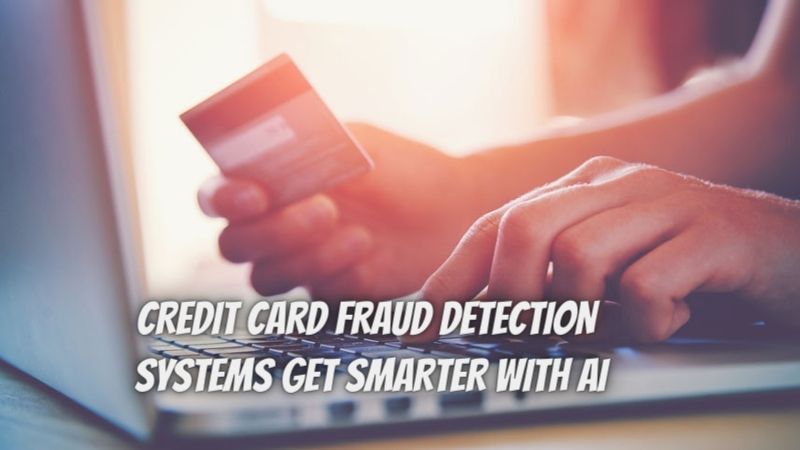CREDIT CARD FRAUD DETECTION SYSTEMS GET SMARTER WITH AI
Banks are now using ML technologies in their fraud detection systems everywhere. The objective is to detect real-time fraud accidents quickly and accurately. While doing this they try to prevent false positives, in which real transactions were blocked due to being tagged as suspicious.
Banks have reason to pay attention to these incidents because in 2019 financial losses to banks were increased to a whopping amount of $32.82 billion from $31.26 billion in 2018. Many bigger banks plan to expand the AI-Based fraud detection systems into enterprise-wide decision support systems.
Across the globe, banks are exercising ML-Driven fraud management systems. Banks are integrating ML technologies into their traditional rule-based approaches. Traditional transaction rules are in place, but fraud detection systems often interfere with legitimate transactions instead of catching original thieves.
HOW DO ML SYSTEMS WORK?
ML-Based systems use complex coding algorithms to verify documents. They are trained on specific datasets, and they keep learning from scenarios presented to them in the form of original documents. ML-based fraud detection systems may vary across the map but generally include behavior and predictive analytics.
ML fraud detection systems widely used several kinds of predictive analytics techniques. Behavioral analytics uses traditional rules, such as location and amount to be transacted but modern systems extract and analyze much broader behavior patterns.
Logistic regression analysis measures the cause-and-effect relationship in datasets and assesses the predictive capabilities of variables in a set. Then an algorithm is created by comparing the fraudulent and authentic transactions. Then banks use this ML-Driven algorithm to check whether the transaction is fraudulent or not.
MORE ACCURACY AND AGILITY NEEDED
Businesses are also at risk in conducting financial payments through banks. Bank fraud can happen at any place like ATM machines and retail point-of-sale. The banks themselves are not immune to fraud, as the fraud can take place at bank branches, mobile banking, wire transfers, etc. These are the reasons for financial institutions to improve their detection processes.
Old fraud detection systems use sets of data and horizon-scanning to verify documents. The result, whether authentic or fraudulent came in the form of binary.
ML systems can provide faster and accurate results. But fraudsters now have access to more customer data and they are using and updating their techniques to fraud banks. They are running automated scripts to fraud, and banks need to keep pace with them.
REAL-WORLD IMPLEMENTATION
Banks do not reveal their IT underpinnings, for obvious reasons. This is true when it comes to fraud detection and security issues. But some banks reveal it through public announcements about the deployment of fraud detection systems.
In 2018, Citi announced plans to integrate Feedzai’s ML-based transaction monitoring system into their bank with the aim to provide its customer with enhanced risk management for transactions. Westpac New Zealand also made a public announcement about ML-based Risk manager implementation after being hit by a wave of frauds.
Cognizant announced that a bank is using its DML technology to detect fraud. DML technology works to enhance the capabilities of neural networks. The unnamed bank also uses OCR technology to scan and process checks. DML technology contains a database of previously scanned checks both authentic and fraudulent.
In DML technology they trained the neural network to use comparative algorithms to check whether the user is authentic or fraudulent. The DML technology by comparing various factors on scan in real-time identifies potential counterfeits.
HOW TO PREVENT FRAUD
Dealing with fraud is a second step, first, try to prevent it from happening.
It is very unlikely that a stolen credit card will cost you any money, but it’s worth taking key steps to prevent fraud in the first place. It can be a major hassle if you lose your credit card. It won’t be possible to avoid all fraud but you can limit your vulnerability.
BEWARE OF PHISHING
Fraudsters try to trick customers into revealing their personal information, credit card number, this trick is called phishing. It can occur through different communications mediums like email, phone no, etc. You can prevent phishing by verifying the legitimacy of those requesting your credit card number.
IDENTIFY SKIMMING
When a thief stole your credit card number during any transaction you process and made a duplicate or conducts a transaction without a physical card, such as online purchase is called skimming. It normally happens when you give your credit card to a waiter in a restaurant or use your card on a device attached to a skimming device.
PAY WITH YOUR PHONE
Apple pay or Android pay use make payment at stores safer because they have technology that changes payment information on every transaction. Mobiles are often password-protected making them hard to open without the actual user biometric verification such as fingerprint or personal identification number.
DO THE LITTLE THINGS RIGHT
- Don’t conduct transactions on public Wi-fi.
- Strengthen your online password by using random combinations of numbers, letters, and symbols.
- Fire-up unwanted documents that contain your credit card number.
- Don’t purchase or give information on a website that you are not sure about.
- Don’t give your credit to other people.













Post Comment
You must be logged in to post a comment.